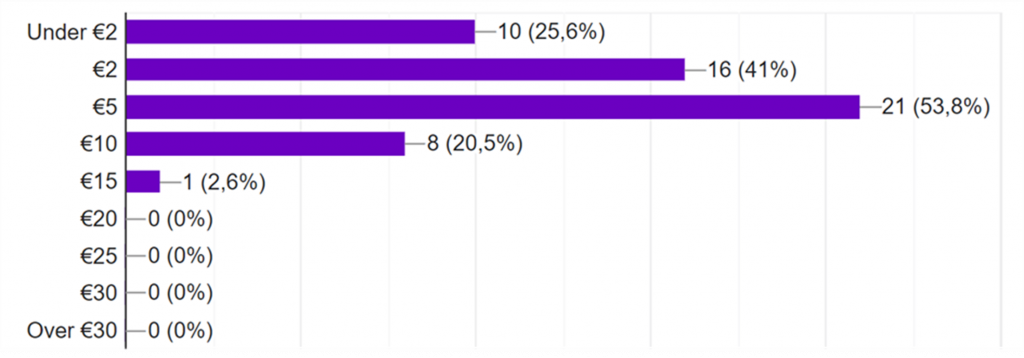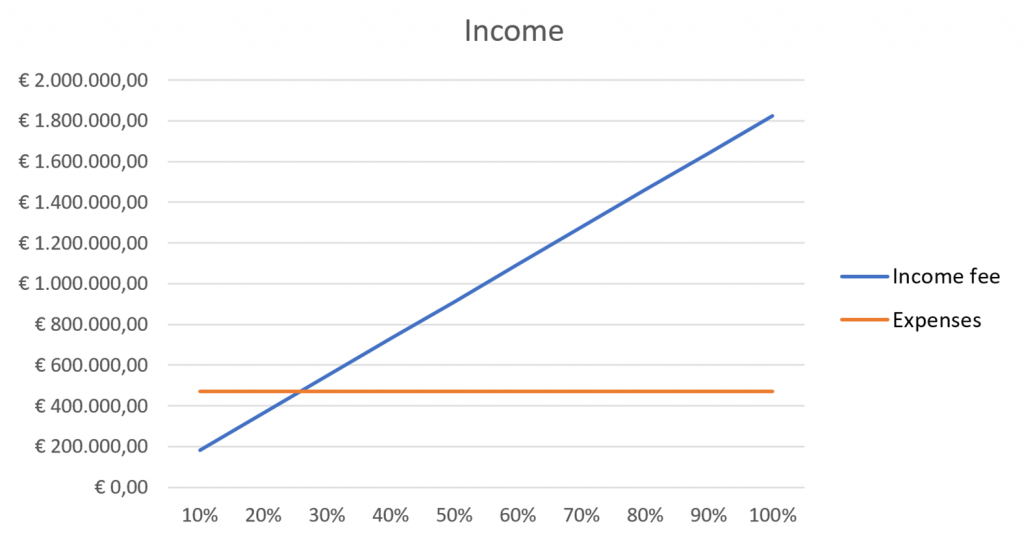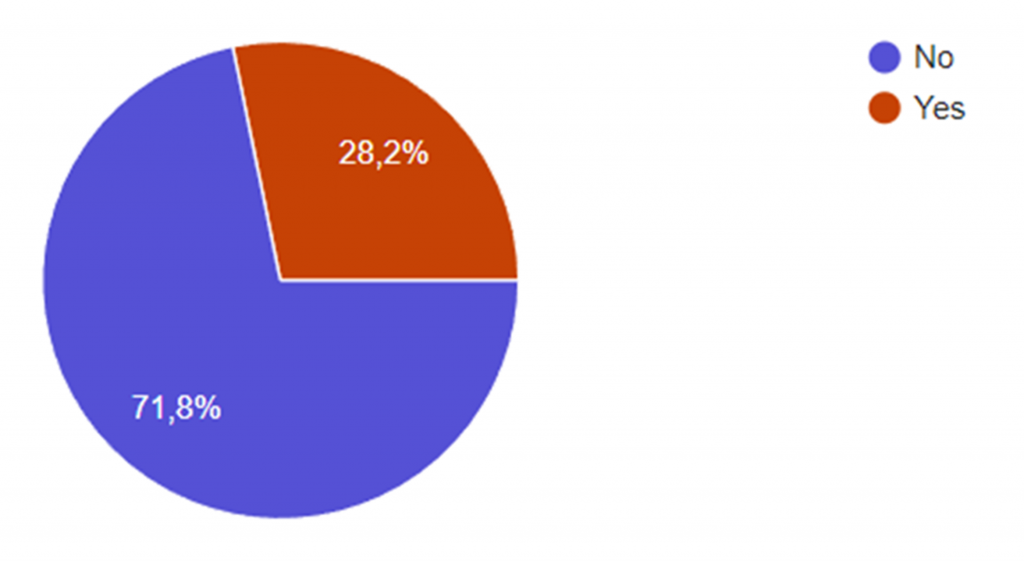
How does it work?
The business model revolves around offering lockers to festivals free of charge. However, there is a unique twist: 100% of the revenue generated from the locker rentals will be retained by FlexiLock. This approach ensures that festivals are relieved of the huge rental fees associated with locker rentals, while visitors benefit from lockers at a fair price. Simultaneously, FlexiLock generates revenue from locker usage fees.
By providing lockers free of charge for festivals, an arrangement where all parties benefit is established. Some would call this a win-win scenario. Festival organizers are able to allocate their resources to other aspects of event planning, while attendees enjoy the convenience and security of lockers at an affordable cost. This approach aligns with the general goal of optimizing the festival experience for all stakeholders.
On top of that, offering free locker units sets FlexiLock apart from others in the industry. This customer-centric approach helps create a positive brand image, fostering goodwill and attracting a loyal following of festival organizations.
Costs
To get started with business, a few initial investments need to be made, primarily focusing on production and marketing expenses.
The production costs comprise various factors. The most significant expenses are associated with materials and machining, totaling up to €1400 per unit. Additionally, each locker unit requires a lock, amounting to €150 per unit. When combined with labor costs and production requirements, the total production cost per locker unit amounts to approximately €1900. Considering a standard-sized truck, 65 units (108 lockers per unit) can fit, resulting in a total of 7020 lockers per truck. To cater to multiple festivals simultaneously or provide a higher quantity of lockers to a single festival, the inventory will consist of 130 units. Consequently, the yearly overall production costs will be €4480,000.
Moreover, marketing activities also require an initial investment. Instead of costs per locker unit, the marketing expenses will be per month. Currently, most advertising is done online. Therefore, €2000 will be invested per month in online advertising, using platforms such as Instagram, Facebook, websites, email campaigns, and more. Additionally, €1000 will be allocated to physical promotion, including the production of flyers, posters, and other marketing materials.
Furthermore, it is essential to consider the costs associated with each festival. Transporting the locker units from storage to the festival location, as well as their return, requires the usage of a truck. As a startup, Flexilock has decided to rent a truck instead of purchasing one. The rental cost for multiple days can easily exceed €800. Additionally, the locker units need regular maintenance and cleaning after each festival, resulting in an additional expense of approximately €350. The labor costs for maintaining, cleaning, and transporting the product are estimated to be €160 per festival.
The total costs per year will total €470k.
Expected profit
To determine the projected profit, some calculations are used. The process and final estimated profit will be presented. Considering the status of Flexilock as a startup, the target market primarily includes smaller festivals in the Netherlands, Belgium, and Germany. In the first year, a goal has been set to participate in 65 festivals, with an average duration of 2 days per festival, totaling 130 festival days annually. Based on this projection, a complete truckload of 65 units, equating to 7020 lockers (108 lockers per unit), would likely be enough for these smaller events. The fundamental vision was to design lockers that offer festivalgoers convenience and security at an affordable price. To get a grasp on what people find realistic prices, a survey was conducted.


The survey results indicate that the majority of festival attendees found €5 to be a reasonable price for locker usage. However, the business model enables Flexilock to offer even a lower price, at €2 per locker usage. This approach not only provides affordability but also allows for a single-coin payment option (if paid physically), simplifying the transaction process.
Nevertheless, potential risks must be addressed: the occurrence of bad weather or instances where festivalgoers do not bring personal belongings, resulting in reduced locker usage. To account for this, a graph was generated showing the income in relation to the percentage of lockers used. The latter represents the average percentage of lockers used on each festival day throughout the year. Additionally, expenses were added to highlight the point at which Flexilock will start making a profit.
Upon examining the graph, it becomes clear that the expenses align with roughly 26% of locker usage per day. Although this may seem undesirable, further analysis shows that it is, in fact, quite promising. Extra research was done to examine the percentage of people utilizing lockers at festivals. The results can be viewed on the right.
The amount of people who use a locker at festivals exceeds the required average of 26%. It is noteworthy to consider that the respondents who participated in the survey were used to encountering regular lockers prices at festivals, often between €5 and €20, or even higher. With the price of €2, an increase in locker usage beyond the recorded 28.2% can be anticipated. Reviewing the income per locker usage graph, a significant profit margin is clear following the intersection point. FlexiLock is set to recover its initial expenses within a few years and then invest in expanding the inventory and improving the equipment to prepare for future growth.

Variations
After careful consideration and exploration of various business models, the earlier-mentioned business model was adopted. However, it is essential to note that alternative models were also evaluated during the process. One alternative option closely resembled the current business model but included an additional rental fee for festivals to pay per locker. This approach reached the desired profit margin even earlier than 26% locker usage. However, considering the company vision and startup status, it would have been challenging to establish a strong market position since it would require festivals to cover additional costs. Nonetheless, this variation provides a valuable insight: once FlexiLock has firmly established itself in the future with free locker rentals for festivals, rental fees to festivals could potentially be introduced, which would still be lower than those of the competitors due to the innovative foldable locker design. Since revenue is still made from the usage of lockers, the price of using the locker can be maintained at a low price.
Another business model variation explored was solely based on charging festivals a rental fee, without collecting money from locker users. This approach closely aligns with the practices of the competitors. However, this model presents a few challenges. Firstly, it results in festivals having to recover the costs they made for renting lockers (plus additional profit), resulting in higher prices for locker users, which contradicts the company vision of providing fair pricing. Secondly, adopting this model would essentially position FlexiLock as just another locker rental company, only slightly more affordable, without establishing the trust and recognition of the brand as a startup. This would make it hard to establish a place in the market.
To conclude, the chosen business model, which offers free locker rentals to festivals while retaining all revenue generated from the lockers, aligns best with the company values, market positioning, and long-term growth.
Expert consultancy
It is important to recognize the importance of seeking guidance, especially from industry professionals. Experts were conducted to see if the initial product concept direction was going in the right direction. Through insightful discussions, the initial concept of a secure wardrobe system transitioned to the development of a foldable locker design, which offered enhanced convenience and versatility.
Throughout the product development, experts were contacted more often, focusing specifically on establishing a great business model. The initial research revolved around determining the profit margin desired by festivals per locker, which would inform the pricing strategy. However, the experts advised approaching the problem from a different perspective—starting with cost analysis and subsequently setting the price accordingly. Additionally, they encouraged us to explore various business models to ensure the value proposition of the product service system was maximized. These expert meetings have enabled us to incorporate industry insights, refine the design, and develop a sustainable business model.
Collaborations
Due to the relatively small-scale nature of the company, information travels easily. Due to the nature of the service provided, keeping track of the reservations is of the utmost importance for the functioning of the company. At all times, it is known exactly where all the units of lockers are, how many are located at each location, and for how long they will remain at the given location. To ensure the right lockers are delivered to the right spot, are taken away on time, and will be serviced, when need be, each unit of lockers will be labelled to ensure proper service at all times.
When an order is made and confirmed, the order will be uploaded to the database. This database contains all the details required for the timely maintenance, delivery, and setup of the lockers. When lockers should be packed up and removed from the location is also shown.
Every form of maintenance, transport, and use per labelled locker unit is tracked to be able to predict when maintenance for the unit is required, as well as to keep track of the reliability of the system.
The foldable mechanism design will be patented to prevent any copying since this mechanism can be useful for many different scenarios. The company name and branding will be trademarked under the set European guidelines to prevent impersonation of the brand.